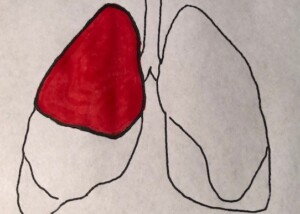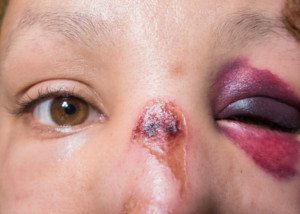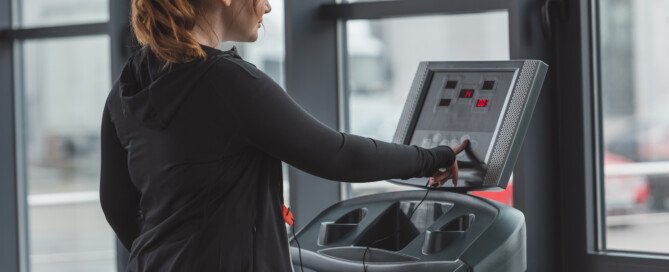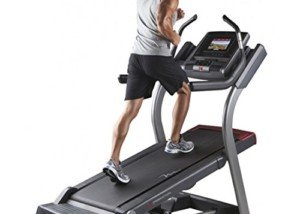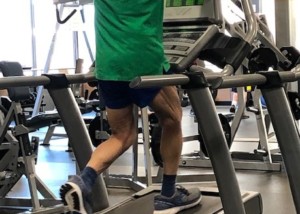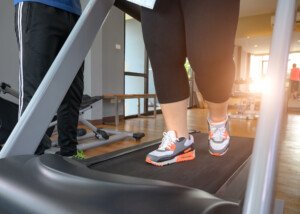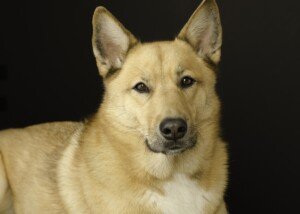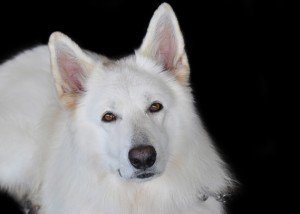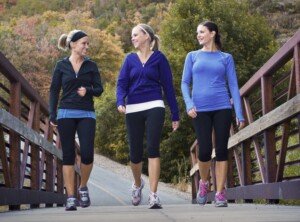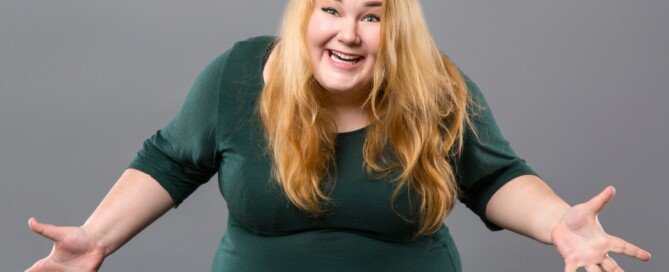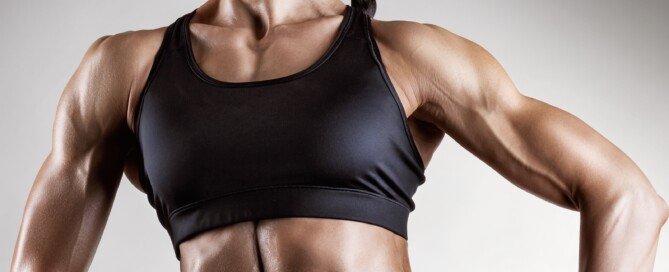Best Seated Exercise for Chronic Obstructive Pulmonary Disease
What kinds of seated exercises are best for COPD?
People with COPD should definitely exercise, and if you have COPD (chronic obstructive pulmonary disease), you’re most likely wondering if certain types of exercise, including seated, are better than others.
And the answer to that question is definitely yes.
First of all, be assured that if you have COPD, this does not mean you should avoid exercise.
Exercise is one of the best things for COPD, and one of the best kinds of seated activity is that of using a stationary bicycle — but not the way you’re now perhaps thinking.
The disease makes it difficult to exhale completely. This discourages physical activity, and more inertia will only make the disease worse.
You can improve your fitness, however, by using one leg at a time on a stationary bike, say studies from the Norwegian University of Science and Technology (NTNU), headed by Professor Jan Helgerud.
When someone with chronic obstructive pulmonary disease works out, oxygen saturation in the blood may drop beneath 88 percent.
One way to get around this is with supplemental oxygen. However, availability of supplemental oxygen to every COPD patient is not realistic.
The solution? One-legged stationary cycling, either seated upright or recumbant.
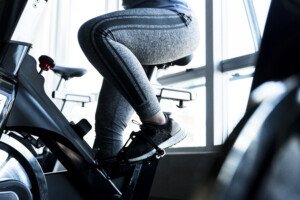
Freepik.com
You pedal with one leg while the other leg rests. One-legged cycling greatly improves fitness in people with COPD, says a study from the NTNU Faculty of Medicine’s Department of Circulation and Medical Imaging.
Oxygen supply to muscles is maximized with the one-legged approach, and the effects of reduced lung capacity are minimized.
In late 2010, the European Journal of Applied Physiology reported the benefits to lung capacity to COPD patients pedaling with one leg at a time.
Stationary bikes at gyms and recreation centers usually come with straps that can be attached to the pedals.
Have a seat, and get pedaling. The free leg can be propped up on the bike’s centerpiece.
You can pedal very swiftly at a light resistance, or slower at a harder resistance, or some combination in between; mix things up for variety.
 Lorra Garrick is a former personal trainer certified by the American Council on Exercise. At Bally Total Fitness she trained clients of all ages for fat loss, muscle building, fitness and improved health.
Lorra Garrick is a former personal trainer certified by the American Council on Exercise. At Bally Total Fitness she trained clients of all ages for fat loss, muscle building, fitness and improved health.
.
Source: The Norwegian University of Science and Technology (NTNU) (2010, January 25). Cycling to better health, one leg at a time. ScienceDaily. Retrieved January 6, 2011, from http://www.sciencedaily.com¬ /releases/2010/01/100120085502.htm
Belly Fat Is Independent Risk Factor for Colon Cancer

Now you have more motivation than ever to get rid of your dangerous belly fat: colon cancer.
Even if you take other measures to prevent this disease, a big belly is bad news. (more…)
Why Women Stay in Abusive Relationships: Not Stockholm Syndrome

Women stay in abusive relationships for several reasons, but Stockholm syndrome is far from the only reason.
Stockholm syndrome means you bond with your captor after he abducts you; usually a hostage-taker is a stranger to the victim.
In an abusive relationship, a woman has a history with the man that usually started out in a fairy tale way: At first, the man seemed like Prince Charming.
The woman falls in love with this charming man, or, at least, develops a strong bond with him, but at this point, it’s not a Stockholm syndrome bond, because there’s been no abuse yet.
It’s the Prince Charming phase. The abuse comes to the woman AFTER she has bonded to the man.
The bond is already there, before the abuse. In Stockholm syndrome, a bond develops after the abuse, after the hostage-taking, after the threats — after the fact.
Mary Jo Fay, RN, MSN, is author of When Your Perfect Partner Goes Perfectly Wrong.
She says: “I agree that Stockholm syndrome is one of the largest reasons why women (and abused men) may stay in crappy relationships, but I also believe there are other reasons as well.”
One reason women stay in abusive relationships is fearing the shame and humiliation should anybody find out.

Shutterstock/ARegina
“Maybe the family warned the woman to begin with that this guy wasn’t healthy for her, but she wouldn’t listen and now she can’t let them be right,” says Fay.
A more overwhelming reason women stay in abusive relationships is that they “fell in love with Dr. Jekyll, but the violent, angry, abusive Mr. Hyde seemed to replace the kind, romantic one,” says Fay.
“At this point the victim usually believes she somehow caused the wonderful Dr. Jekyll to disappear and actually caused the abusive Mr. Hyde to show up.
“She frequently believes if ONLY she could figure out what she did to make him switch like that, then she could turn things back around to what they were like in the beginning. So she stays.”
Thus, Stockholm syndrome isn’t necessarily the key reason women stay in abusive relationships. Instead, it literally can come down to low self-esteem.
Fay explains: “In interviewing the number of (mostly) women I have in this situation, they all seem to share at least some form of low self-esteem … many, while looking outwardly strong and as if they have the world by the tail. Yep – that would have been me!
“But, they may have felt not good enough for most of their lives … at least when it came to relationships.”
Abusive men are part of the equation.

Freepik.com, cookie_studio
“The predator is able to sniff these victims out of the masses quite easily,” says Fay.
“Then, he gobs on the charm … something our poor victim has dreamed of all her life and has yet to find.
“The sudden attention, the flowers, the romantic evenings sweep her off her feet, and for the first time she feels that someone finally ‘gets her!’
“She’s easily convinced that the odds of anyone else coming along who ‘gets her’ are slim to none.”
As you can see, this is not how Stockholm syndrome develops. “Once her predator has his claws tightly sunk into her psyche, he can then gradually start switching to almost any behavior he wants, as he knows she’s hooked.”
The next mechanism that keeps a woman staying in an abusive relationship is intermittent reinforcement of rewards in the abusive relationship.

Shutterstock/Andy Dean Photography
“As the predator starts behaving badly and the victim starts to consider leaving, the predator knows just exactly how to throw in the treat just often enough to make her stay.
“Thus a big fight might be followed with flowers, sincere apologies, promises to seek counseling, wonderful lovemaking, etc. The victim remembers Prince Charming … she knows he’s in there.
“He knows just how to time these reinforcements to keep her in the game.”
The next reason women stay in an abusive relationship is fear of being alone.
Women with kids, especially, may fear the absence of a man who can support them.
“Many women marry a man whom they know is a bad match, because the thought of being alone was so much more frightening than the idea of maybe having a rocky marriage.”
Finally, a reason women stay in abusive relationships is the brainwashing.
“The abusers seem to be able to convince their victims of many things … that no one else could possibly want them, that he will win any custody battle for the children and that she will never see them again, that he can murder her,” etc.
Stockholm syndrome applies more to a situation involving a stranger-to-stranger kidnapping, with threats of, “I’ll kill you if you try to leave.”
Though abusive men have threatened the lives of their women, and though the women have stayed in abusive relationships out of fear for their life, this does not mean that the women actually have an emotional bond to their violent husband or boyfriend.
Some women do, yes, but as you’ve just read, you can see that Stockholm syndrome doesn’t explain her “love” for him.
And fear of being alone has nothing to do with feeling an emotional bond with a violent man.
The woman may hate him to high heaven, but the fear of being alone, or of breaking her parents’ heart with the truth, wins hands-down.
And don’t forget intermittent reinforcements: “He’s so incredibly loving and kind when he’s sober.”
An abusive relationship often develops insidiously, starting off with just verbal slights, and ultimately evolving into regular physical beatings.
Fay uses this analogy: “If we throw a frog into a pot of boiling water, of course he’ll jump out immediately.
“However, if we throw him in a cold pot of water, then slowly turn up the heat, he won’t notice just how hot it’s getting until it’s too late and he can’t get out. Thus are the lives of many abused victims – women or men.”
I asked Fay for details about her background in the area of women in violent relationships, and she replied:
“My own experiences, combined with interviewing and consulting with hundreds of folks across the U.S. and beyond … let me assure you, I’ve heard it all.
“(And interestingly enough, it’s nearly always the same story, simply with different names and players. But the underlying ‘dis-ease’ is all the same. It’s only the level of intensity that seems to vary.)”
Fay’s book-cover jackets describe her as: A survivor of several difficult relationships who speaks with the voice of one who’s overcome childhood sexual abuse, survived a difficult divorce, worked for some nasty bosses, struggled with a few manipulative friends, and even nearly took her own life due to a depression that felt endless.
After coming through the darkness she finally found her own pathway to healing and discovered healthy relationships instead.
She now consults with individuals across the globe as they too seek the answers to escaping their abusive relationships, discover ways to make better choices in future mates, and instead learn how to love “healthy.”
Although Fay’s marriage was not physically abusive, she explains: “When you’re involved with someone who is not a healthy match for you your own low self-esteem issues are pretty huge, the damage that can be done is still substantial … as evidenced by my near suicide.
“As I like to remind my clients, MY baggage, combined with HIS baggage, is what made that relationship unhealthy for me.”
 Mary Jo Fay is a speaker, author and consultant who specializes in relationships.
Mary Jo Fay is a speaker, author and consultant who specializes in relationships.
 Lorra Garrick has been covering medical, fitness and cybersecurity topics for many years, having written thousands of articles for print magazines and websites, including as a ghostwriter. She’s also a former ACE-certified personal trainer.
Lorra Garrick has been covering medical, fitness and cybersecurity topics for many years, having written thousands of articles for print magazines and websites, including as a ghostwriter. She’s also a former ACE-certified personal trainer.
.
Top image: Shutterstock/Antonio Guillem
How to Maximize Calorie Burn Using a Treadmill Incline

If you hold onto the treadmill while using the incline, you’re burning far fewer calories than what the display says.
Holding on cancels out the incline and causes many other problems. (more…)
How to Give Large Dogs Injections with No Assistance
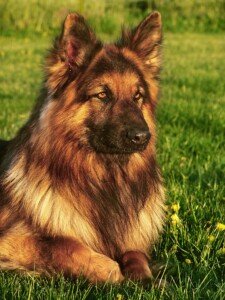
Giving injections to big dogs can be a major hassle, so here are guidelines for giving injections to large dogs without assistance.
I had been giving injections to a large dog for several weeks, and that’s been plenty of time for me to figure out some tricks to make this task as easy as possible. (more…)
Walking vs. Napping for Mid-Afternoon Energy Recharge
If you had to choose between walking and napping to re-energize, which should it be? Forget the power nap; do the power WALK. Everything points to the walking.
“Walking is generally considered the better choice of activity when looking to recharge in the mid-afternoon,” says Supriya Rao, MD, a quadruple board-certified physician with Integrated Gastroenterology Consultants.
“Research has found that a 15 minute walk can be more beneficial than a 10 minute nap to improve alertness and reduce fatigue.
“Walking increases blood circulation, oxygen levels, and endorphin levels to boost the body’s energy.
“Due to the physical movement of walking, it requires more mental engagement than napping, making it a better choice for those looking to recharge their energy levels.”
Let’s say that you feel lethargic and sluggish, and maybe drowsy, as lunchtime at work approaches.
You decide to forego eating and just nap at your desk for 45 minutes.
Your twin in a parallel universe feels the same way but decides to take a brisk walk outdoors.
You nap for 45 minutes, and for much of that you are asleep, and your timer awakens you. How do you feel?
I once worked a job where a man named Steve almost always used lunch time to nap at his desk, arms folded atop it, head buried in arms.
At the end of lunchtime he looked drained and groggy, not re-energized and perky.
Listless employees who had spent some of their lunch break walking outside always returned appearing refreshed.
So how do you feel after that 45 minute nap?
More rejuvenated than your twin who walked for that time?
The walker’s heart will become elevated and pump more blood throughout the body.
The napper’s heart rate and metabolism will slow down. The body will stiffen, being still for 45 minutes, whereas walking will loosen up joints and muscles.
Quite literally, walking will wake you up. Napping will put you to sleep.
After a walk — even for just 15 or 10 minutes — you will feel more ready to jump through some hoops. After a nap, even for 15 minutes, that’s the last thing you’ll want to think about.
With napping, some people get carried away. If the napping is done at home, that 15 minute snooze may eventually turn into a 30 minute nap.
That then becomes 45 minutes. Over time, the person is now taking naps lasting an hour.
On days off from work, one can get into the habit of taking two-hour naps in the middle of the day despite sleeping overnight for eight hours.
Two hours then becomes three. When this person retires, he might by then have developed such a strong napping habit that he sleeps 2-3 hours every afternoon or early evening, despite averaging eight hours of sleep per night.
Too much sleep, and napping gets included in this, is linked to heart disease, diabetes and increased mortality.
Heart disease and diabetes can cause oversleeping.
Researchers do not know which comes first here. Does a disease process (that someone might not even be aware of that’s occurring in their body) cause sleepiness during the day?
Or does the bad habit of excessive napping lead to a disease process?
Obstructive sleep apnea, which many people have yet don’t know it, typically causes daytime drowsiness that’s not remedied with napping.
Some prescription drugs can cause drowsiness as well.
If you can’t get through the day or evening without a nap, it’s important to see a doctor for a thorough checkup.
However, it could also be that you’ve “trained” your body to expect lengthy naps every day, and thus, you feel that your body “needs” them.
Replace some of that napping with a brisk walk and see what happens.
When it comes to napping vs. walking, only one of these improves cardiorespiratory function, bone health, lowers blood pressure and helps keep the body from getting stiff: brisk walking.
 Dr. Rao is board certified in internal medicine, gastroenterology, obesity medicine and lifestyle medicine. She is managing director of Integrated Gastroenterology Consultants, and director of Medical Weight Loss at Lowell General Hospital. She also runs the motility program, which focuses on disorders of the esophagus, irritable bowel syndrome and anorectal disorders.
Dr. Rao is board certified in internal medicine, gastroenterology, obesity medicine and lifestyle medicine. She is managing director of Integrated Gastroenterology Consultants, and director of Medical Weight Loss at Lowell General Hospital. She also runs the motility program, which focuses on disorders of the esophagus, irritable bowel syndrome and anorectal disorders.
 Lorra Garrick has been covering medical, fitness and cybersecurity topics for many years, having written thousands of articles for print magazines and websites, including as a ghostwriter. She’s also a former ACE-certified personal trainer.
Lorra Garrick has been covering medical, fitness and cybersecurity topics for many years, having written thousands of articles for print magazines and websites, including as a ghostwriter. She’s also a former ACE-certified personal trainer.
.
Top image: Shutterstock/Brocreative
Cut-Off Age When Kids Should No Longer Be Forced to Hug

If you make your kids hug people against their will, you’ll want to know at what age you should stop doing this.
Parents who force their children to “give hugs” at some point will stop this.
The decision is often not based on that child’s choice.
Rather, the parent one day decides the child is too old to be ordered to give or receive hugging on command.
At what age is it still okay to make your child give or receive hugs against their will?
The circumstance may be predictable, such as a visit to an aunt and uncle.
The event may also be unexpected, such as the kindness of a stranger.
The irony is that, despite knowing the child doesn’t like to hug on command, the parent one day decides to stop enforcing this rule, as though there’s a magic cut-off age.
The title of this article is meant to be flippant.
That’s because nobody in their right mind would keep making kids hug people when they don’t want to.
“I agree that children should never be forced to hug someone, but I am going to say that they should never be forced to give a hug to a parent either,” says Dr. Tia Kern-Butler, a licensed psychologist for over 20 years who treats a broad range of issues including relationship problems and behavioral issues of children and adolescents.
“Affection and physical touch is never something that should be forced or coerced,” continues Dr. Kern-Butler.
“Children need to be given permission to have control over their personal space which includes their body and how they share it.”
Is it about the children or the parents?
I once saw a reality TV show in which quintuplets, about age nine, were taken on a tour of a bakery factory.
At the end, when the kids were given treats by the owner, their mother made them give the owner a hug!
One night argue that this was scripted by the director, but that doesn’t matter, because the kids were visibly reluctant to do this.
Often, the order to give a hug is over a circumstance that is not “hug-worthy,” and giving a tour of a bakery is one of those circumstances.
Their mother didn’t want to hug the owner, yet she was just as much a part of the tour!
If those kids had been 13, would she have ordered them to give the hug?
Though it was all on camera, and for all we know, rehearsed several times, this scene certainly depicted what many parents would have done under similar circumstances.
The Bizarre Circumstance of Forced Hugs
- The event is not hug-worthy.
- The parent herself never hugs.
- The kids are usually under age 10.
- The child who’s forced to give a hug is a girl more often than a boy.
- The parent who forces the hug is, by far, more often the mother than the father.
Is it really about teaching kids to show gratitude and respect?
Teaching children to be gracious, appreciative or respectful does not require ordering them to give hugs to strangers or to relatives.
For whose benefit is the forced hugging?
- Your child’s? Come on, you know this isn’t true.
- YOURS? Hmmm, we’re on to something.
Parents feel that if they don’t order their child to give a hug, the targeted recipient will feel slighted!
Or, the parent will think that the targeted recipient — even someone they just met — will think she’s a bad mother for not telling her child to “give that nice man a hug for fixing your bicycle.”
Hey moms, what if “that nice man” changed your flat tire?
Would you hug him? Not likely. At most you’d shake his hand. So why do you force your kids to give hugs as a thank-you? Sleep on this.
So it all comes down to a self-serving reason for the parent, who places the feelings of the recipient ahead of the child’s!
Another reason might be control. The parent likes being in charge, but overdoes it by ordering hugs and disregarding the child’s feelings.
Ironically, it’s almost universal that such a parent will quit ordering hugs once the child reaches a certain age – or maybe height, perhaps – a height closing in on the mother’s, for instance.
Or maybe it’s a change in behavior of the child. For example, a girl has lost her interest in stuffed animals and Star Wars figurines, and now talks about boys, makeup and fashion.
The parent then no longer forces the hugs, even though the parent may not consciously be aware of just why the rule no longer stands.
In Conclusion…
Stop forcing your children, regardless of their age, to give or receive hugs from anyone they don’t want touching them.
It’s really a simple formula, and will teach your kids that they have ownership of their bodies, not to mention increasing their respect for you!
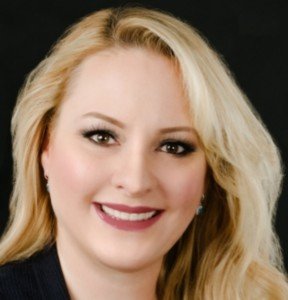 Currently in private practice Dr. Kern-Butler spent 10 years as the lead child and adolescent psychologist with Winter Haven Hospital and served as the mental health liaison for the Children’s Advocacy Center for 14 years.
Currently in private practice Dr. Kern-Butler spent 10 years as the lead child and adolescent psychologist with Winter Haven Hospital and served as the mental health liaison for the Children’s Advocacy Center for 14 years.
Professionalpsychologyofpinellas.com/about-me
 Lorra Garrick has been covering medical, fitness and cybersecurity topics for many years, having written thousands of articles for print magazines and websites, including as a ghostwriter. She’s also a former ACE-certified personal trainer.
Lorra Garrick has been covering medical, fitness and cybersecurity topics for many years, having written thousands of articles for print magazines and websites, including as a ghostwriter. She’s also a former ACE-certified personal trainer.
Easy Cure for Feeling too Fat to Go to the Health Club
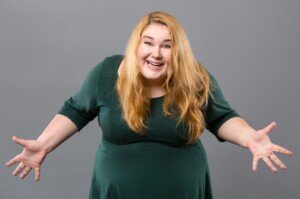
Feeling too fat to step inside a gym?
I have solutions to this conundrum that afflicts so many overweight people. Use my approaches and you will never be afraid to set foot inside a gym ever again. (more…)
Over 65? Cardio Exercise or Weight Training?

Are you over age 65 and wondering which is better for your body: cardio exercise or weight training?
Does it even make a difference if you’re over 65 when it comes to these two categories of exercises?
“Cardio exercise and weight training have distinct purposes and should be pursued in tandem,” says Monica Charlton, a senior exercise specialist and certified Silver Sneakers/personal trainer out of New Orleans.
“Cardiovascular exercise strengthens your heart and muscles, burns calories, boosts mood, and reduces stiffness and arthritic pain,” continues Charlton.
“Strength training improves bone health and maintains muscle mass. It also improves balance, posture and coordination.
“For best results, elderly folks should engage in both types of exercise.”
You should to both types of exercise. However, for the sake of argument, what if you had to choose either aerobics or strength training?
Lifting weights wins, hands down.
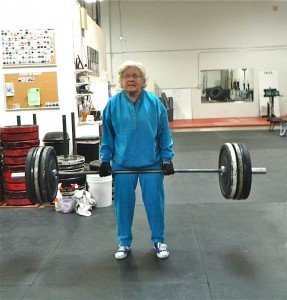
A sedentary older person will usually have difficulty with cardio exercise beyond casual paced walking, gentle low impact aerobics or a pedaling-type machine.
It will be quite a while before they can advance to walking hills, jogging and more intense aerobics like a standard step class.
But they need to just stick with it, and make sure that their primary care physician is aware of a new exercise venture.
Lifting Weights for the Elderly Is More User Friendly
Though strength training may seem “intimidating” to some older novices, it may also seem very user-friendly to other novices — at least when compared to aerobic exercise which may leave an elderly person out of breath after only a few minutes.
- Strength training can be done immediately
- Strength increases will come quickly with proper instruction and adherence to correct form and technique.
- Strength training can be done in a seated position as well.
Lifting weights, far more than cardio, will increase bone density–and this is very important to anyone over 65.
Cardio workouts have their virtues, but they won’t do anything for bone density in the upper body, whereas there are countless upper body weightlifting moves that will drive up bone density.
Leg workouts with weights (e.g., squats, leg press, deadlift) will strengthen the hip and knee joints.
These motions mimic those of everyday living. Every time an older person struggles to get out of a car or chair, this is very similar to the joint motions required of a squat or leg press.
By performing careful squatting routines and leg presses at a gym, the senior person will become much more efficient at everyday tasks such as rising out of a chair.
Older people carry groceries and garbage, and may want to scoop up small grandchildren.
Upper body weightlifting routines will improve their ability to handle these tasks.
Aerobic workouts will give older people more stamina to do things like housework, shopping and sightseeing.
Something Very Interesting About Weight Training for Senior Adults

Shutterstock/Monkey Business Images
Again, the 65+ person should do BOTH weights and cardio. But for those who are “intimidated” by the idea strength training, there’s a very intriguing phenomenon you need to be aware of.
It’s that of people who are clearly at least 70 who can barely walk, yet kick butt on weightlifting equipment.
If you have difficulty walking, do not assume you can’t use leg strength training machines.
I’ve also witnessed old-age people limping around the gym yet working out with big dumbbells while seated.
The Takeaway
• Do both aerobic exercise and strength training.
• Make sure your doctor clears you for specific exercises. For example, if you’ve had knee replacements, you may be told to avoid the leg extension machine.
• Ask a trainer at the gym to teach you correct form, even for seemingly simple moves like seated biceps curls.
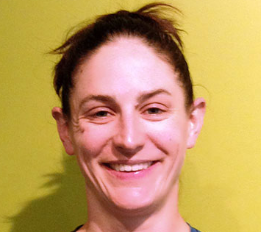 Monica Charlton’s personal training services include fitness/body composition assessments, nutrition planning, running programs and customized programs for clients with disabilities or injuries, as well as older and mainstream clients.
Monica Charlton’s personal training services include fitness/body composition assessments, nutrition planning, running programs and customized programs for clients with disabilities or injuries, as well as older and mainstream clients.
 Lorra Garrick is a former personal trainer certified through the American Council on Exercise. At Bally Total Fitness she trained women and men of all ages for fat loss, muscle building, fitness and improved health.
Lorra Garrick is a former personal trainer certified through the American Council on Exercise. At Bally Total Fitness she trained women and men of all ages for fat loss, muscle building, fitness and improved health.
.
Top image: Freepik.com.
How Manly Can a Woman Look if She Lifts Weights for Fitness?

If a woman lifts weights for fitness only, not for competitive bodybuilding, just how manly might her muscles end up looking?
This is about the typical woman who trains with weights, rather than a woman who wants to compete in bodybuilding contests.
A woman who lifts weights will look no more manly than will a man who DOESN’T lift weights look like a woman!
In a world that we live in today where we feel like we are being judged left and right, many of us want to make sure we’re looking pretty close to our best.
That is why fitness can be so important in someone’s life!
While people in general can maintain that healthy figure with a good diet and simple exercise such as running on a treadmill, there are also ways to change your shape for the better such as weightlifting.
Unfortunately, there is a common misconception by many females that they will begin to look too manly if they begin lifting weights.
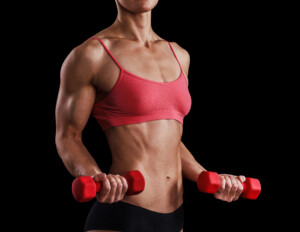
Shutterstock/AXL
Why is this? Well, one reason is they may make a simple online search for “female bodybuilders” and only see pictures of the “enhanced” ones.
What I mean by “enhanced” are the female bodybuilders that supplement with testosterone, which obviously is not legal to use.
By seeing these pictures, someone would think that they may turn into that if they begin lifting weights.
Now, being a bodybuilder and open minded person myself, I see nothing wrong with looking like that.
However, I also know that many females would rather keep their more feminine look as much as possible and not wish to carry that much muscle.
When it comes down to it, there is virtually no way that you can begin to look overly manly when lifting weights and trying to build lean, fat-burning muscle.
Men on average have 10 times the testosterone as women, yet even THEY must bust their butts in the gym to pack on muscle.
Watch these men work out. They are straining, sometimes loudly grunting.
It takes a long time for males to start looking big; for females, it is going to be even harder!
Putting on muscle for a female will also only make you look leaner and better.
Since muscle takes up less space than fat, you will look leaner at 120 lbs with some muscle than you would at 120 lbs with hardly any muscle!
Did you also know that resistance workouts are great for the immune system?
Strength training boosts immune function by enhancing overall physical health and promoting efficient immune responses.
Consistent strength exercises increase the production of immune cells and improve circulation, allowing the body to better detect and fight off infections.
Additionally, strength training helps reduce inflammation and lowers the risk of chronic diseases, which can otherwise weaken the immune system.
Now that you realize how beneficial weight training can be, you can now go out and start reaching your goals!
 Lorra Garrick is a former personal trainer certified by the American Council on Exercise. At Bally Total Fitness she trained clients of all ages for fat loss, muscle building, fitness and improved health.
Lorra Garrick is a former personal trainer certified by the American Council on Exercise. At Bally Total Fitness she trained clients of all ages for fat loss, muscle building, fitness and improved health.
.


